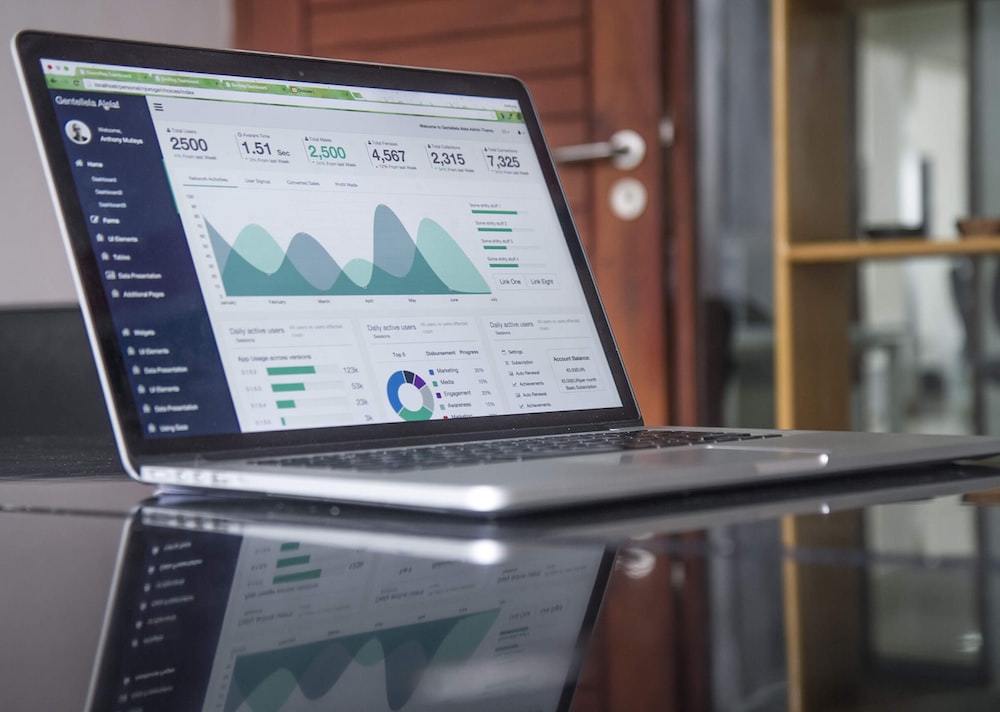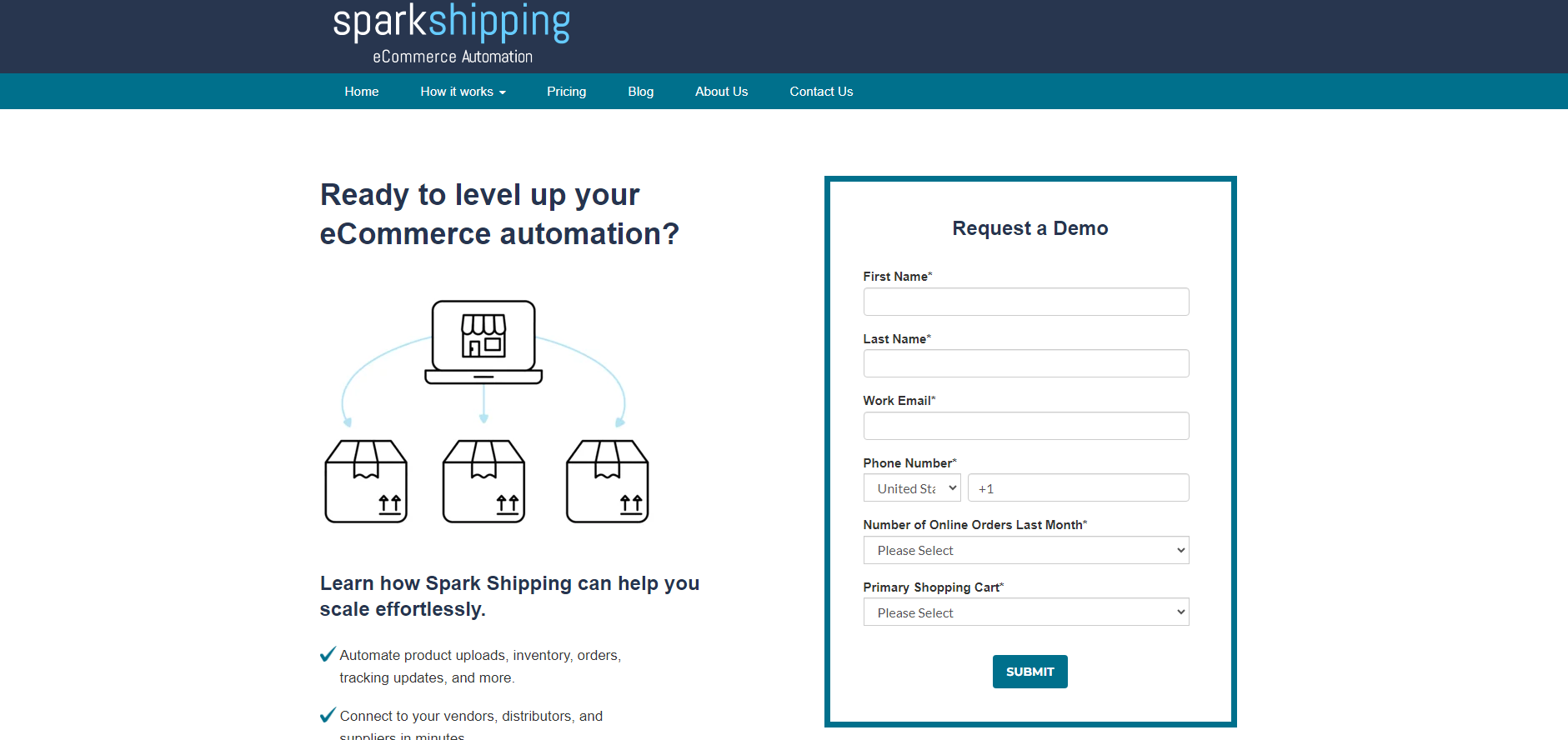Boost Online Sales: Mastering eCommerce Conversion Rate Optimization

For eCommerce stores, every click is a potential goldmine. But what turns casual browsers into loyal shoppers?
The answer lies in the art and science of conversion rate optimization (CRO).
With the right CRO strategies, you’ll be able to attract more interested shoppers to your product listings and persuade more people to buy.
Not only that, but you’ll steadily build a dedicated following of repeat customers for the long haul.
Whether you’re a seasoned store owner or just starting out, understanding conversion rate optimization will give you a roadmap to increased sales and customer engagement.
But CRO isn’t just about tweaking a button here or changing a color there; it’s a strategic approach that combines psychology, technology, and business savvy.
In this guide, we’ll show you how to track your current conversion rates, understand customer behavior, and implement changes that don’t just attract visitors but convert them into loyal customers.
What Is an eCommerce Conversion Rate?

eCommerce conversion rate gauges the effectiveness of how well your online store turns visitors into paying customers (or gets them to take an action like signing up for a newsletter).
A conversion occurs when a user takes an action on your website that you want them to take. For example, a conversion would be if a potential customer clicks on an ad for your product, visits your online store, and then purchases that product.
A conversion rate measures how often this happens, so if 100 people click on a specific ad and 10 of them purchase the product, the conversion rate for that ad will be 10% (10/100*100).
This vital metric is a clear indicator of how well your website engages with users and persuades them to complete a purchase—or take any other desired action, like subscribing to your email newsletter.
The eCommerce conversion rate store owners typically care about most is how many site visitors purchase something, but there are several other conversions that you can track.
These include:
- Products sold
- Products that have been added to a cart
- Products added to a wishlist
- Email signups
- Social media engagement
- Any other action you want users to take and can track
Regardless of what you count as a “conversion,” tracking them is the first step in improving them and will help you build a solid, profitable eCommerce business.
Conversion rate tracking is crucial for many reasons.
It’s a Performance Indicator
At its core, a conversion rate tells you how well your marketing efforts and website are working. It tells you whether your online store is appealing and user-friendly and if it’s succeeding at getting shoppers to do what you want them to do.
This metric also assesses the effectiveness of your marketing funnel. Whether investing in organic strategies like content marketing and SEO or paid strategies like pay-per-click (PPC) ads, the conversion rate tells you which channels are the most effective at converting site visitors into customers.
This data makes it possible to invest your time and money only into the marketing channels that have a tangible impact on your eCommerce website.
Your Conversion Rate Provides Customer Insights
Every audience is different. You’ll better understand what site visitors want to see by checking your eCommerce conversions.
A high conversion rate means your site resonates with your shoppers, while a low rate indicates there might be barriers to purchase or areas where you should improve the customer experience.
Boost Profitability by Optimizing Your Conversion Rates
Conversion rates and profitability go hand in hand. Higher conversion rates mean you’re making more sales. Best of all, CRO helps you earn more conversions from the traffic you already have, reducing the need to drive more traffic to your website.
That’s a better use of your resources and increases revenue—a true win-win!
How To Calculate Your eCommerce Conversion Rate
.png?width=1000&height=664&name=image9%20(2).png)
Tools like Google Analytics will automatically calculate conversion rates for every page on your site. Even so, it’s still important to understand how Google Analytics arrives at these numbers.
Follow these three easy steps to calculate your conversion rates.
Define a Conversion
Typically, the most critical conversion you want to track is how many site visitors make a purchase. But that isn’t the only desired action on your site.
This means you need to Identify what constitutes a conversion for your store that you would like to track. This could include actions like newsletter signups, account creations, or any other key actions.
Collect Data
We recommend using an analytics tool like Google Analytics to track the total number of unique visitors to your website over a period of time. The software will also track the total number of conversions over that period.
Plug the Data Into the Formula
Use the conversion rate formula to calculate the conversion rate for each page and desired action:
Conversion rate = (Number of conversions / Total number of visitors) X 100
This formula will give you the conversion rate as a percentage.
For example, if your store had 500 newsletter signups in a month and received 20,000 visitors, your conversion rate for newsletter signups would be:
(50 / 20,000) X 100 = 2.5% conversion rate
That means 2.5 people subscribe to your newsletter for every 100 visitors to your site.
Tracking eCommerce Store Conversion Rates Over Time

Calculating conversion rates is a great way to assess what’s working for your store and identify areas for improvement.
But this isn’t a metric you check just once; you should track conversion rates over time and monitor them regularly.
Since consumer preferences, competition, and the economy change over time, it’s critical to monitor conversion rates. It’s the best way to stay on top of a changing market while boosting your sales.
The easiest way to monitor conversion rates over time is to use a tool like Google Analytics. It’s a free tool that provides a comprehensive view of your website’s traffic and conversion data.
It comes with a bit of a learning curve, but Google provides a free training and certification course to get you up to speed.
When analyzing your conversion rates, it's also important to consider key performance indicators (KPIs) such as:
- Average order value (AOV)
- Traffic sources
- Customer lifetime value (CLV)
- Cart abandonment rate
- Bounce rate
- Cost per acquisition
- Return on advertising spend (ROAS)
- Return rate
Plenty of factors affect your conversion rate, so monitoring these complementary metrics will give more context to your eCommerce website performance.
They also help you understand not just how many conversions you're getting but also the value of your eCommerce conversion rates.
What Is a Good eCommerce Conversion Rate?
It’s good to track your conversion rates over time, but even then, you might wonder, “Are my conversions good, or am I performing below the industry standard?”
The average conversion rate for your market is a helpful benchmark for assessing whether you’re on track or need to make changes.
However, a “good” eCommerce conversion rate varies greatly depending on your product categories and market.
According to Adobe, the average eCommerce conversion rate is in the 1% to 4% range. In the U.S., the average is 2.57% across all product categories, but the food and beverage category saw average conversion rates in the 4.6% range.
When in doubt, look up the latest conversion rate benchmarks for your eCommerce niche to better understand your current performance.
Seven eCommerce Conversion Rate Optimization Strategies
What if you check your eCommerce conversion rate and realize you aren’t where you want to be? Whether you want to get up to your industry average or just want to rake in a few more sales, conversion rate optimization is a must for eCommerce businesses.
Try these seven eCommerce CRO strategies to make the most of your resources while boosting online sales.
1. Optimize Your Site for Mobile Devices

If you built your website on a desktop, it’s easy to forget about the mobile experience, but mobile-first shopping is the future.
Mobile eCommerce will account for 62% of all retail shopping by 2027. Plus, search engines like Google will penalize you for having a non-mobile-optimized website.
Make these tweaks to build your site for users on a mobile device:
- Use a responsive site design or template
- Decrease load times by compressing or minimizing images
- Remove popups
- Simplify the checkout form
- Increase button sizes
- Switch to simplified navigation menus
2. Offer Free Shipping

Unexpected shipping costs are a conversion killer. Sixty-six percent of online shoppers expect free shipping on all purchases—and a whopping 48% abandon their carts because of high shipping costs.
If you have a problem with abandoned carts, consider offering free shipping.
You don’t have to eat these costs, though. Most eCommerce store owners build shipping costs into the product’s price.
If free shipping isn’t always an option, give shoppers a range of shipping options.
You could offer free shipping on orders over $75 or free five-day shipping with the option to pay for two-day shipping.
3. Tweak Your Landing Pages

Landing pages are prime opportunities for eCommerce conversion rate optimization. These pages are critical for marketing and PPC campaigns, acting as a stopgap between a referral source and your product pages.
The quality of a webpage can have a big impact on your conversions, though, so follow these tips to create more effective landing pages.
Test Performance
Use A/B testing, also known as split testing, to see which versions of a webpage your audience prefers.
Create Compelling Headlines
Headlines should grab shoppers’ attention while clearly communicating the value of your product.
Use High-Quality Images
High-resolution images are a must here. Choose images that showcase your products from multiple angles. Allow users to zoom in for a more detailed view.
Integrate Strong Calls to Action (CTAs)
What do you want customers to do after viewing this page? Every page needs one clear CTA. It should be prominent and persuasive, urging visitors to take a desired action, whether that’s subscribing or making a purchase.
Resist the urge to combine multiple CTAs on one page since that can split visitors’ attention and reduce conversions.
Use FOMO to Your Advantage
“Fear of missing out” (FOMO) drives urgency, which can increase eCommerce conversions. Limited-time offers, countdown timers, or alerts about limited product stock encourage users to take action quickly.
Be Consistent
Use consistent fonts, styling, messaging, and branding on all landing pages. Getting creative here is tempting, but the landing page should still look like part of your main site.
Consider Minimizing Header Navigation
You don’t want to divide site visitors’ attention. See if your landing page conversions improve by removing the header navigation at the top of the page. This encourages users to engage with the current page designed for their stage of the sales funnel.
4. Invest in Multimedia Content

A picture says a thousand words, but a video says even more. In fact, adding video to your website can increase conversions by an impressive 86%.
We love images and infographics, but when conversions are on the line, you need video content.
It takes time to produce quality video content, but more shoppers want to watch videos before they buy a product. Consider adding a variety of videos to your website to boost conversions, including:
- Short product demos
- “About us” videos
- Animated explainer videos
- Unboxing videos from real customers or influencers
- Behind-the-scenes videos of how you make the product
5. Optimize Product Pages

Think of product pages not as simple spec sheets, but as sales pages. The more persuasive your product pages are, the more likely a customer is to make a purchase.
Your product listings should never be static, though. Try these CRO techniques to constantly tweak your product pages for better performance.
Add Social Proof
User reviews and testimonials make a big difference. They build trust and credibility, persuading undecided shoppers to make a purchase when they otherwise wouldn’t. If you use a platform like Shopify, you can easily add a widget that displays real customer reviews next to each product.
Write SEO-Friendly Product Descriptions
Write detailed product descriptions that tell the shopper about the product’s features, benefits, and uses. Lean heavily into how the product solves the shopper’s biggest pain points. It’s also important to use relevant SEO keywords so search engines are more likely to index your product pages.
Use High-Quality Images
Online shoppers rely on product images to decide whether they'll make a purchase. Since they can’t see your goods in real life, these images are critical. Offer multiple views of the product, including both lifestyle shots and images of the product against a white background. Take photos from multiple angles and allow shoppers to zoom in on the images for greater detail.
Always Include Product Specs
Include detailed specifications for each product, including dimensions, weight, materials, and care instructions. It’s also a good idea to create images for scale, so the customer knows exactly what they’re getting. You can’t prevent all returns, but providing clear specs will significantly reduce returns and unhappy customers.
Answer FAQs
Don’t direct shoppers to the FAQ area of your website. Instead, answer common questions on the product page. Anticipate and answer these common questions directly on the product page. This approach keeps customers on the same page, encouraging them to convert.
6. Simplify the Checkout Process

You might think the hard work is over once a shopper adds an item to their cart, but 65% of checkout sessions end without a sale. You can’t save every abandoned cart, but these small changes will encourage more shoppers to convert.
Minimize Steps
Reduce the number of pages, form fields, and steps involved in the checkout process. If you need a lot of information, integrate with a user’s Amazon or Google account to streamline the process.
Don’t Require a Login
Logins give you more information about a shopper, but most shoppers will leave if you require an account for checkout. Always offer a guest checkout option. If you want to encourage people to create an account, offer incentives for doing so, like customer loyalty rewards, a coupon code, or free birthday gifts.
Add a Progress Bar
Shoppers get impatient. They'll leave if they feel like the checkout process is taking too long. Adding a progress bar shows how far left they have to go during checkout, giving shoppers clarity during the purchase process.
Add a “Save Cart” Feature
Some shoppers just aren’t ready to buy yet, and that’s okay. Instead of losing the sale, allow customers to save their cart and come back later to complete the purchase.
Don’t Add Surprise Fees
Most shoppers abandon their carts because of unexpected shipping or processing fees. Be upfront about all costs before the checkout process. Consider adding shipping and taxes to the price of your products so the price shoppers see is the price they pay.
7. Focus On Your Marketing Strategy

Marketing has a big impact on conversion rates. A well-thought-out strategy attracts more visitors and converts them into customers. Fine-tune these areas of your marketing campaigns for better eCommerce CRO.
Develop a Strong Brand Identity
Your brand identity is what differentiates you from competitors. It gives shoppers a reason to go with your products over everything else in the market. Your brand name, logo, style, and personality should build credibility. Focus on your unique selling proposition (USP) to build a brand that stands out for all the right reasons.
Understand Your Target Audience
An audience of loyal customers starts with proper targeting and segmentation. Conduct research and build customer personas to drive your marketing messaging.
Build a Marketing Team
From email marketing to social media, marketing requires a lot of time and energy. If it’s too much to manage solo, consider building a team of experts or third-party contractors to do the heavy lifting.
Invest in Content Marketing
Content marketing is one of the most affordable and effective ways to get the word out about your products. Blogs, YouTube videos, social media posts, and email marketing campaigns build relationships with shoppers by sharing valuable information.
Streamline Your eCommerce Business With Spark Shipping

Your eCommerce conversion rate is more than a number. It reflects your store’s health and provides insight into customer preferences. With eCommerce conversion rate optimization, you’re not just chasing a number: you’re building a more successful, customer-centric online business.
From the smallest detail on your landing page to the grand strategy of your marketing campaigns, everything counts in the world of eCommerce CRO.
That’s why eCommerce brands rely on Spark Shipping to automate everything from supplier product orders to customer package tracking. See how automation can boost your eCommerce conversion rates: Get a Spark Shipping demo now.
Popular Posts
Posts by Topic
- Dropshipping (5)
- Dropshipping Automation (4)
- Dropship Suppliers (3)
- EDI (3)
- Pricing Strategy (3)
- Amazon Seller Central (2)
- Conversion Rate Optimization (2)
- Dropshipping Products (2)
- Order Management (2)
- Vendor Product Catalog (2)
- Dean Soto (1)
- Feature Announcement (1)
- Online Empire Academy (1)
- Product Optimization (1)
- Shipping (1)
- referral marketing (1)